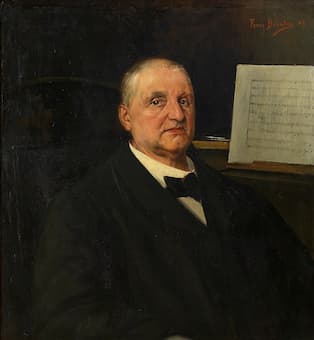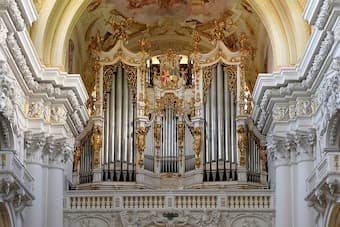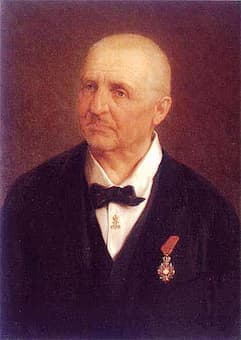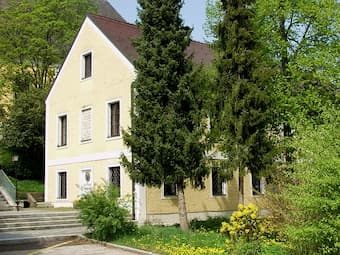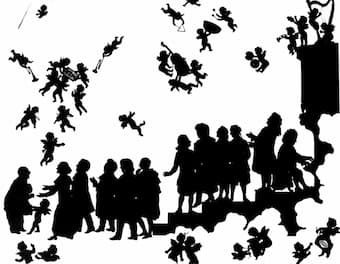Born on January 31, 1797, in Himmelpfortgrund,
Austria, Franz Peter Schubert, the son of a schoolmaster, received a
thorough musical education and won a scholarship to boarding school.
Although he was never rich, the composer's work gained recognition and
popularity, noted for bridging classical and romantic composition. He
died in 1828 in Vienna, Austria.
Quotes
"A mind that is too easy hides a heart that is too heavy."
– Franz Schubert
Born on January 31, 1797, in Himmelpfortgrund, Austria, Franz
Peter Schubert demonstrated an early gift for music. As a child, his
talents included an ability to play the piano, violin and organ. He was
also an excellent singer.
Franz was the fourth surviving son of Franz Theodor Schubert, a
schoolmaster, and his wife, Elisabeth, a homemaker. His family
cultivated Schubert's love of music. His father and older brother,
Ignaz, both instructed Schubert early in his musical life.
Eventually, Schubert enrolled at the Stadtkonvikt, which trained
young vocalists so they could one day sing at the chapel of the Imperial
Court, and in 1808 he earned a scholarship that awarded him a spot in
the court's chapel choir. His educators at the Stadtkonvikt included
Wenzel Ruzicka, the imperial court organist, and, later, the esteemed
composer
Antonio Salieri,
who lauded Schubert as a musical genius.
Schubert played the violin in
the students' orchestra, was quickly promoted to leader, and conducted
in Ruzicka's absence. He also attended choir practice and, with his
fellow pupils, practiced chamber music and piano playing.
In 1812, however, Schubert's voice broke, forcing him to leave the
college, though he did continue his instruction with Antonio Salieri for
three more years. In 1814, under pressure from his family, Schubert
enrolled at a teacher's training college in Vienna and took a job as an
assistant at his father's school.
Schubert worked as a schoolmaster for the next four years.
But he also continued to compose music. In fact, between 1813 and 1815,
Schubert proved to be a prolific songwriter. By 1814, the young composer
had written a number of piano pieces, and had produced string quartets,
a symphony, and a three-act opera.
Over the next year, his output included two additional symphonies and
two of his first Lieds, "Gretchen am Spinnrade" and "Erlkönig."
Schubert is, in fact, largely credited with creating the German Lied.
Boosted by a wealth of late 18th-century lyric poetry and the
development of the piano, Schubert tapped the poetry of giants like
Johann Wolfgang von Goethe, showing the world the possibility of representing their works in musical form.
In 1818, Schubert, who had not only found a welcome audience for his
music but had grown tired of teaching, left education to pursue music
full-time. His decision was sparked in part by the first public
performance of one of his works, the "Italian Overture in C Major," on
March 1, 1818, in Vienna.
The decision to leave school teaching seems to have ushered in a new
wave of creativity in the young composer. That summer he completed a
string of material, including piano duets "Variations on a French Song
in E minor" and the "Sonata in B Flat Major," as well as several dances
and songs.
Franz Schubert is considered the last of the classical composers and one of the first romantic ones. Schubert's music is notable for its melody and harmony.
Composer Franz Schubert received a thorough musical education and won a scholarship to boarding school. Although he was never rich, the composer's work gained recognition and popularity, noted for bridging classical and romantic composition. He died in 1828 in Vienna, Austria.
Franz Peter Schubert demonstrated an early gift for music. As a child, his talents included an ability to play the piano, violin and organ. He was also an excellent singer.
Franz was the fourth surviving son of Franz Theodor Schubert, a schoolmaster, and his wife, Elisabeth, a homemaker. His family cultivated Schubert's love of music. His father and older brother, Ignaz, both instructed Schubert early in his musical life.
Eventually, Schubert enrolled at the Stadtkonvikt, which trained young vocalists so they could one day sing at the chapel of the Imperial Court, and in 1808 he earned a scholarship that awarded him a spot in the court's chapel choir. His educators at the Stadtkonvikt included Wenzel Ruzicka, the imperial court organist, and, later, the esteemed composer Antonio Salieri, who lauded Schubert as a musical genius. Schubert played the violin in the students' orchestra, was quickly promoted to leader, and conducted in Ruzicka's absence. He also attended choir practice and, with his fellow pupils, practiced chamber music and piano playing.
In 1812, however, Schubert's voice broke, forcing him to leave the college, though he did continue his instruction with Antonio Salieri for three more years. In 1814, under pressure from his family, Schubert enrolled at a teacher's training college in Vienna and took a job as an assistant at his father's school.
Schubert worked as a schoolmaster for the next four years. But he also continued to compose music. In fact, between 1813 and 1815, Schubert proved to be a prolific songwriter. By 1814, the young composer had written a number of piano pieces, and had produced string quartets, a symphony, and a three-act opera.















